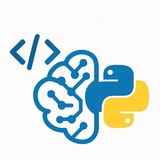💡 {{Python Exam}}
Python dictionaries are a fundamental data structure used to store data as key-value pairs. They are mutable (can be changed), dynamic, and since Python 3.7, they maintain the order of insertion. Keys must be unique and of an immutable type (like strings or numbers), while values can be of any type.
1. Creating and Accessing Dictionaries
• A dictionary is created using curly braces
•
•
•
2. Modifying a Dictionary
• A new key-value pair is added using simple assignment
• The value of an existing key is updated by assigning a new value to it.
• The
3. Looping Through Dictionaries
•
•
•
#Python #DataStructures #Dictionaries #Programming #PythonBasics
━━━━━━━━━━━━━━━
By: @CodeProgrammer ✨
Python dictionaries are a fundamental data structure used to store data as key-value pairs. They are mutable (can be changed), dynamic, and since Python 3.7, they maintain the order of insertion. Keys must be unique and of an immutable type (like strings or numbers), while values can be of any type.
1. Creating and Accessing Dictionaries
# Creating a dictionary
student = {
"name": "Alex",
"age": 21,
"courses": ["Math", "CompSci"]
}
# Accessing values
print(f"Name: {student['name']}")
print(f"Age: {student.get('age')}")
# Safe access for a non-existent key
print(f"Major: {student.get('major', 'Not specified')}")
# --- Sample Output ---
# Name: Alex
# Age: 21
# Major: Not specified
• A dictionary is created using curly braces
{} with key: value pairs.•
student['name'] accesses the value using its key. This will raise a KeyError if the key doesn't exist.•
student.get('age') is a safer way to access a value, returning None if the key is not found.•
.get() can also take a second argument as a default value to return if the key is missing.2. Modifying a Dictionary
user_profile = {
"username": "coder_01",
"level": 5
}
# Add a new key-value pair
user_profile["email"] = "coder@example.com"
print(f"After adding: {user_profile}")
# Update an existing value
user_profile["level"] = 6
print(f"After updating: {user_profile}")
# Remove a key-value pair
del user_profile["email"]
print(f"After deleting: {user_profile}")
# --- Sample Output ---
# After adding: {'username': 'coder_01', 'level': 5, 'email': 'coder@example.com'}
# After updating: {'username': 'coder_01', 'level': 6, 'email': 'coder@example.com'}
# After deleting: {'username': 'coder_01', 'level': 6}• A new key-value pair is added using simple assignment
dict[new_key] = new_value.• The value of an existing key is updated by assigning a new value to it.
• The
del keyword completely removes a key-value pair from the dictionary.3. Looping Through Dictionaries
inventory = {
"apples": 430,
"bananas": 312,
"oranges": 525
}
# Loop through keys
print("--- Keys ---")
for item in inventory.keys():
print(item)
# Loop through values
print("\n--- Values ---")
for quantity in inventory.values():
print(quantity)
# Loop through key-value pairs
print("\n--- Items ---")
for item, quantity in inventory.items():
print(f"{item}: {quantity}")
# --- Sample Output ---
# --- Keys ---
# apples
# bananas
# oranges
#
# --- Values ---
# 430
# 312
# 525
#
# --- Items ---
# apples: 430
# bananas: 312
# oranges: 525•
.keys() returns a view object of all keys, which can be looped over.•
.values() returns a view object of all values.•
.items() returns a view object of key-value tuple pairs, allowing you to easily access both in each loop iteration.#Python #DataStructures #Dictionaries #Programming #PythonBasics
━━━━━━━━━━━━━━━
By: @CodeProgrammer ✨
❤4👍1
